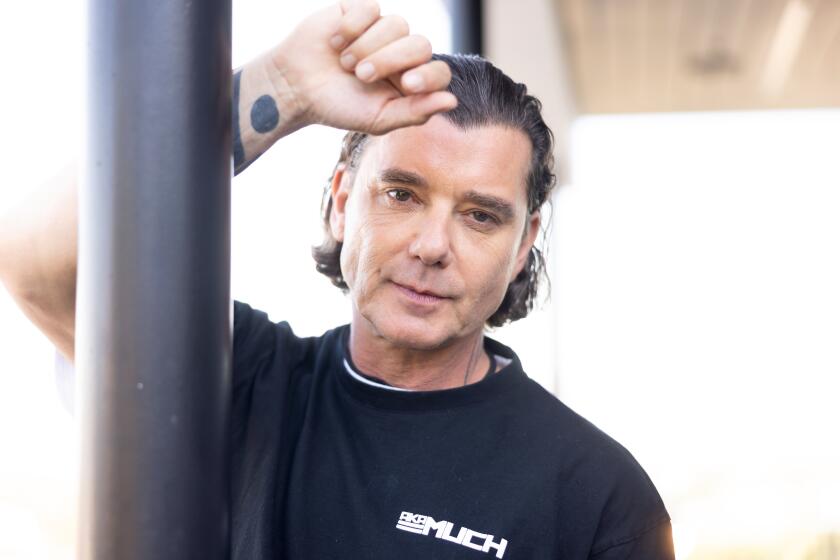POP MUSIC : COVER STORY : A Survival Guide to Club-Hopping Across the Country
- Share via
But what if you’re stuck some night in Lodi, again, or Chapel Hill, N.C.?
Well, you’re on your own in Lodi, but in Chapel Hill, you ought to check out the Cat’s Cradle.
It’s one of the hot spots on the national rock club map--along with such places as the Metro in Chicago and the Ace of Clubs in Nashville.
A little traveling music, please:
Austin: In a city with more clubs per capita than any other, Antone’s is the best known. Long the headquarters of the local blues-rock scene, it’s where the likes of Stevie Ray Vaughan and the Fabulous Thunderbirds learned their stuff. But Austin American Statesman rock critic Don McCleese says that for the real flavor of the town, try the Continental, where such “too-rock-for-country and too-country-for-rock” acts such as Kelly Willis and Junior Brown play, and La Zona Rosa, owned by blues-rock pianist Marcia Ball’s husband and featuring a “surreal Tex-Mex” outdoor venue called, yes, the Marcia Ballroom.
Chapel Hill: The college town is sort of what Athens, Ga., was a decade ago--a hotbed of young, up-and-coming rockers. To see why, head for the Cat’s Cradle, which just opened in nearby Carrboro after years of bouncing around from site to site. It holds about 600 people, with a mostly mid-20s crowd, drawn by a lineup that reads like the latest college rock radio faves: Jesus Lizard, Come, Dillon Fence and local leaders Superchunk have all played there recently.
Chicago: The Windy City’s latest rock celeb, Liz Phair, picked the Metro as the site for her New Year’s Eve shows, more or less cementing the longstanding club as the place to be. Owner Joe Shanahan has long been a strong supporter of local talent--he took Smashing Pumpkins under his wing when the band was unknown and gave it prized opening slots for the likes of Jane’s Addiction. The Metro’s capacity is about 1,000 and the ambience is described by Chicago Tribune rock critic Greg Kott as “cutting-edge cool.” A bonus: the basement houses the Smart Bar, a hangout for people such as Ministry’s Al Jourgenson and such visiting stars as Metallica.
Minneapolis: The choice is First Avenue--the place featured in Prince’s “Purple Rain” movie--and it’s really two clubs in one. One part of the former Greyhound depot in the warehouse district is known as the Seventh Street Entry; it’s a 300-capacity room that’s where the Replacements and Soul Asylum got their starts and such touring acts as Richard Thompson, Robyn Hitchcock and even Nirvana played before they got too big. The main room, holding about 1,500 people, hosts an eclectic roster of acts. Jon Bream of the Minneapolis Star Tribune says a typical stretch will have folk-country singer Jimmie Dale Gilmore one night, funk-metal band Bad Brains the next and a world beat act like Fela Kuti the next.
Nashville: Music City U.S.A.’s best known club is probably the Bluebird, where singer-songwriters often try out new material. But for a livelier time, the Ace of Clubs gets the nod. On weekends, it’s a dance club, but through the week a variety of local and touring bands--”from hard-core country to (punk band) Buzzkill,” says music publicist Nancy Russell--play live. The Kentucky HeadHunters had one of their first shows at the 500-capacity club, which features two bars and two balconies ringing its main floor.
New York: Having just celebrated its 20th anniversary, CBGB’s--the Bowery launching pad of the late-’70s New York punk/new wave scene--is still the best, says Rolling Stone music editor David Fricke. “You never know who you’re going to see that will be big or important six months down the line,” he says. The latest buzz is D-Generation, a New York Dolls-like band signed by EMI. Recent anniversary shows featured the likes of the B-52’s, Ramones and David Byrne.
San Diego: The rising San Diego scene--with such bands as Stone Temple Pilots, Rocket From the Crypt and Lucy’s Fur Coat gaining national attention--is centered in the Casbah, a downtown club that recently doubled its capacity to about 150 with a move down the block from its old location annexed to a radiator repair shop. Bryan Spevak of the San Diego-based independent Cargo Records label notes that even bands that have outgrown the club keep returning because they like the feel and the way they’re treated. For bigger, national bands, a quick trip across the border to Iguanas in Tijuana is in order. With its open floor and wrap-around balcony, the 800-capacity room--which has been a favorite for up-and-coming acts from Jane’s Addiction to Rage Against the Machine--has a surreal quality that makes you feel you are in the middle of a Fellini movie.
San Francisco: Slim’s, co-owned by Boz Scaggs, started out in the mid-’80s as an R&B; club, but in recent years has been the place for both veteran cult acts (Jimmie Dale Gilmore, Dick Dale) and rising-star bands (the Cranberries, Smashing Pumpkins). San Francisco Bay Guardian critic Derk Richardson describes the place, which holds about 500 people, as “a lot of smoke and drink, and it’s within walking distance of other hip clubs and cafes, so it’s part of a scene.”
Seattle: The top spot in the grunge and caffeine capital of the Northwest is, at least at the moment, the Crocodile Cafe--by day a restaurant, by night a 400-capacity rock club favored by everyone from Nirvana (they’ve done surprise gigs there) to R.E.M.’s Peter Buck (a rare set of his own at a benefit last year) to such touring bands as Stereolab and Unrest. “It’s everyone’s favorite place,” says Sub Pop Records publicist Nils Bernstein.
More to Read
The biggest entertainment stories
Get our big stories about Hollywood, film, television, music, arts, culture and more right in your inbox as soon as they publish.
You may occasionally receive promotional content from the Los Angeles Times.










